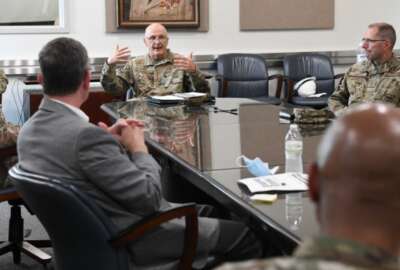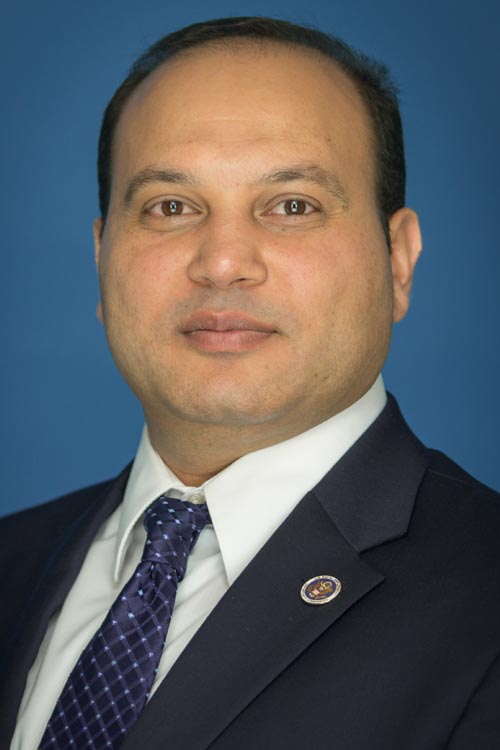

Chief information officers at the Government Publishing Office and NASA have learned quite a bit this year about their agencies’ telework capabilities, and how...
Chief information officers at the Government Publishing Office and NASA have learned quite a bit this year about their agencies’ telework capabilities, and how well their employees can adapt. New policies and technology have kept business moving and made leaders rethink some moves going forward.
Speaking during the Transforming Technology for Dynamic Work webinar Aug. 27, sponsored by FedInsider, Sam Musa, chief information officer at the Government Publishing Office, said his director, Hugh Halpern, described the pandemic as the biggest disruption to agency operations since the Civil War.

GPO’s workforce is about evenly split between white- and blue-collar employees, who typically work in offices or printing plants, Musa said.
“With respect to COVID-19, one of the challenges we faced recently was the increased telework capacity. As a matter of fact our telework force almost doubled as a result of this pandemic. Obviously that means we’re going to need additional laptops, additional printers and other equipment,” Musa said.
GPO ordered hundreds of new laptops and printers to rectify the shortage. While waiting for their arrival, Musa said, GPO used some secure virtual desktops and switched from hard to soft security tokens for VPN access, to keep staff out of the building as much as possible.
Several employees also did not have internet at home, so GPO had to ship them phones to act as hotspots, Musa said.
Emma Antunes, acting deputy CIO and deputy director for NASA Goddard Space Flight Center, said that space communications and launch windows could not wait for the pandemic. Goddard has more than 10,000 employees at six locations nationwide, with scientists and engineers designing and building spacecraft, conducting experiments and communicating with the international science community. She said about 20% of the workforce is now back on site..
Lucky for Goddard, the workforce had just switched over to Microsoft Teams and Jabber collaboration tools so the transition to telework was noticeably easier. Leaders worked policy to allow people to bring equipment home, and stress-tested VPN connections.
“As Sam mentioned, some of our workforce was in locations where they don’t have strong local internet. So that’s the case with our workforce and Wallops Flight Facility on the Eastern Shore. We were able to use MiFis and hotspots to make up the difference,” Antunes said.
Musa said that GPO ended up producing a lot of new policies and procedures: virtual onboarding new employees for the first time, using conferencing tools and shipping IT equipment to their homes, and remote swearings in. For the first time the agency started heavily distributing phones with software to connect remotely to desk phones. GPO also deployed 500 cellphones which were pre-configured by the vendor to save time. The secure virtual desktop cloud-based solution is also a first for GPO, he said.

At Goddard, Antunes said the pandemic spurred faster technology adaptation.
“People have become so comfortable with doing everything remotely. They’re really ready. Why are we so dependent on having service at the office?” she said. “Going to the cloud is no longer seen as so scary or big and complicated. Because they are just expecting the tools to be there, you know they’re dependent on these products.”
The center still had to convert 450 incoming interns to virtual workers, which meant changing what assignments or projects they could take on that were still meaningful. One intern worked on an artificial intelligence and machine-learning project to analyze data and discovered some planets in the process.
“They’ll get a paper out of it,” Antunes said.
Think about that, webinar moderator Michael Kennedy said: “We’re discovering planets in our living rooms! Well, kinda.”
Antunes said the CIO side has to be ready with solutions, whether to work with business or IT. But leaders who were more prepared for full-scale telework likely had more energy to expend on digital transformation since the pandemic hit. In addition, the smaller, lowercase “I” innovations, such as new collaboration tools, are key to achieving the uppercase “I” innovations, she said.
Thinking what GPO could have done better, Musa said his agency did well with transparency and staff communication but a centralized communication center would help for consistent and precise information flow.
Antunes said one cultural change that came from the pandemic was the expectation of being on time to meetings heightened. And she said it’s something she hopes is here to stay.
“You may laugh but there was what’s commonly referred to as ‘Goddard time,’ people that arrive maybe five minutes or more late to a meeting, because we’re a big spread-out campus. It was annoying but people felt it was an accepted norm,” she said. “But now meetings start within a minute of the actual scheduled time. So that’s a ‘Wow, aha [moment]’ to me and I hope we get to keep that.”
Copyright © 2025 Federal News Network. All rights reserved. This website is not intended for users located within the European Economic Area.
Amelia Brust is a digital editor at Federal News Network.
Follow @abrustWFED



